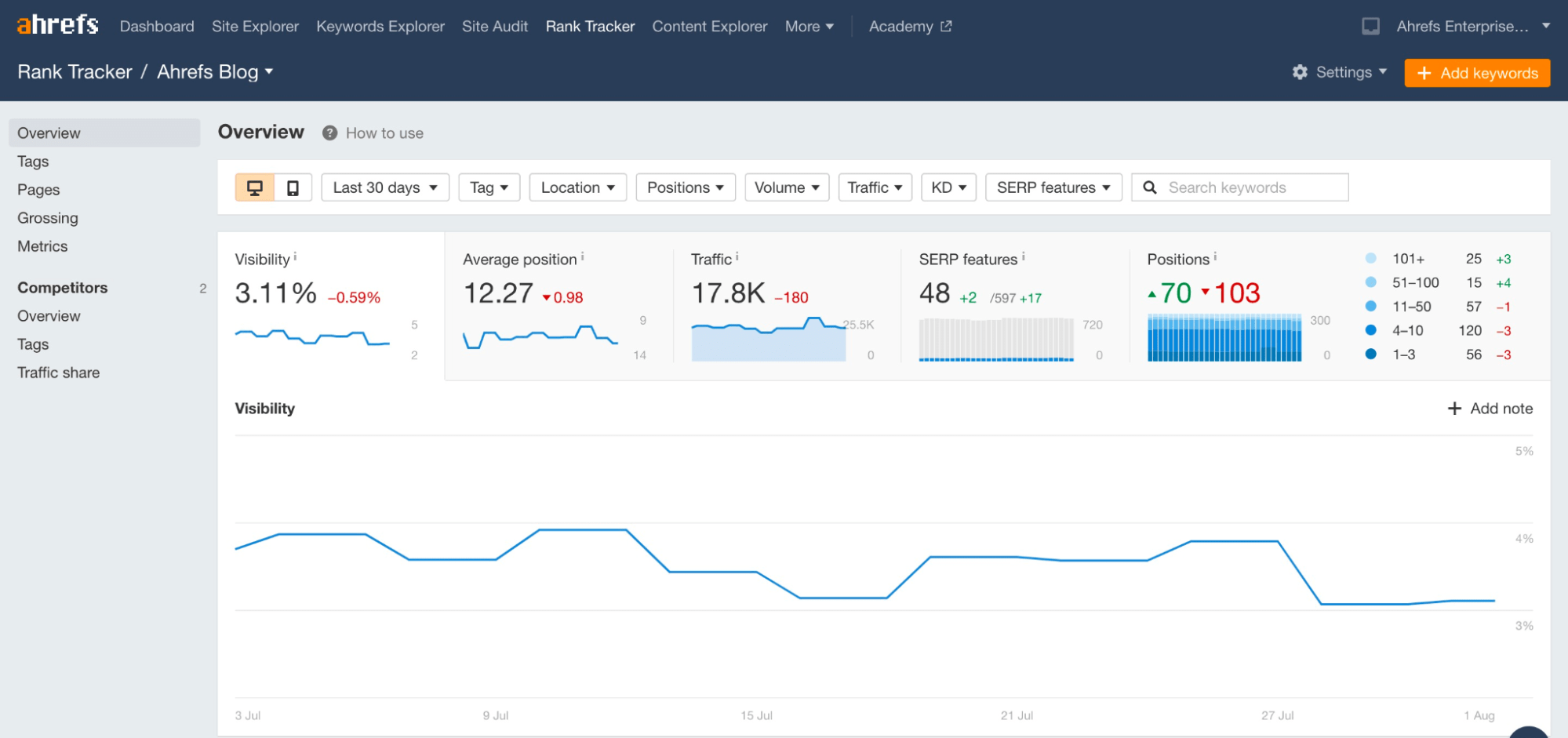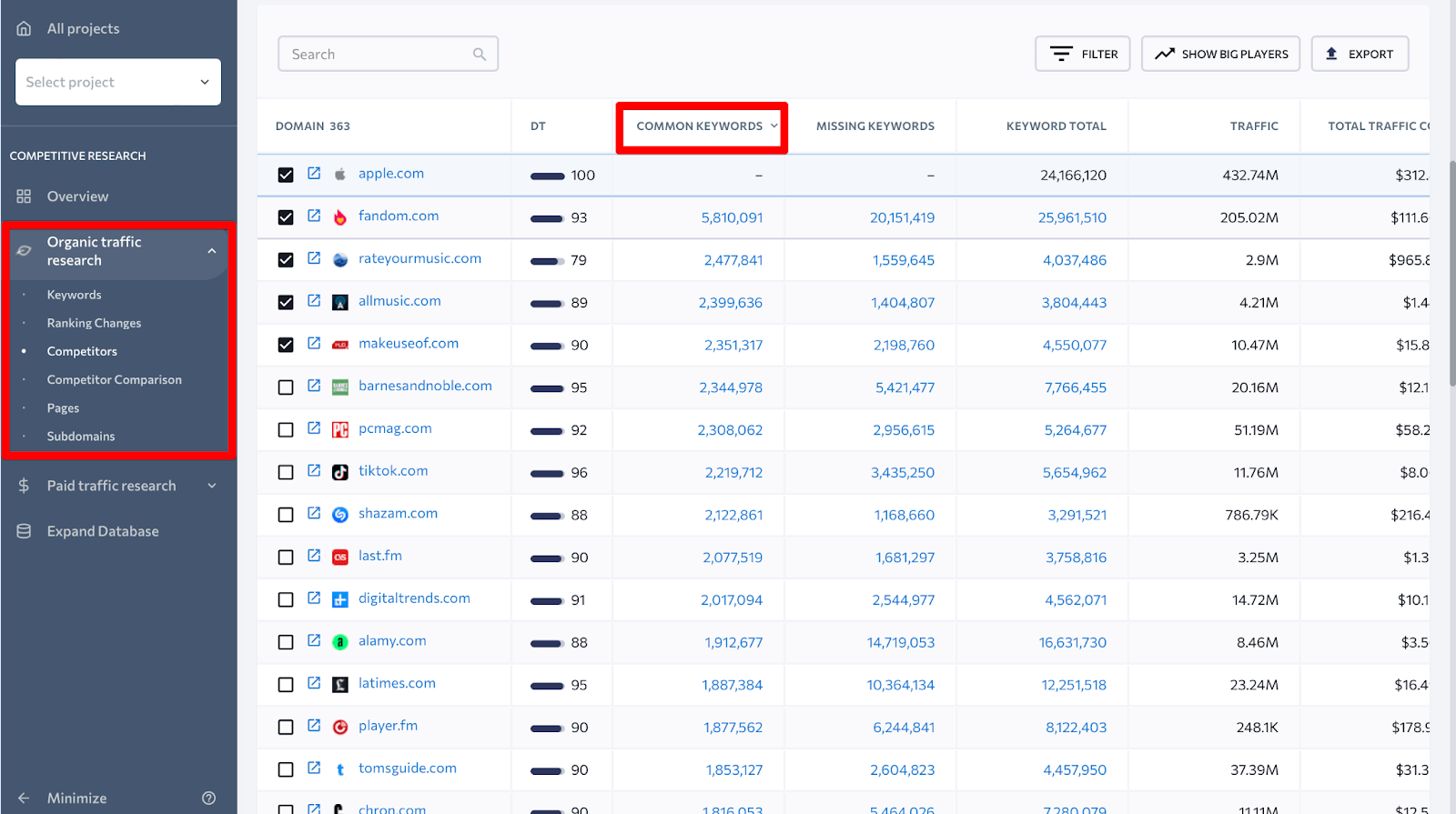In the ever-evolving landscape of business, staying ahead of the competition is not just an advantage; it's a necessity. Understanding where your competitors stand in their respective markets can provide invaluable insights and help shape your strategic decisions. One effective way to achieve this is to track competitor rankings, a practice that can give you a clear picture of your industry's dynamics. By monitoring the rankings of competitors, businesses can identify strengths, weaknesses, opportunities, and threats. This knowledge can lead to more informed decision-making and ultimately drive growth and success.
Tracking competitor rankings involves analyzing various metrics, including website traffic, search engine optimization (SEO) performance, social media engagement, and market share. These metrics can reveal how well competitors are performing and where your brand fits into the competitive landscape. Furthermore, tracking these rankings over time can provide insights into trends and shifts in consumer preferences, allowing businesses to adapt their strategies accordingly.
In this article, we will explore the importance of tracking competitor rankings, the various tools available for this purpose, and the best practices for interpreting the data. Whether you are a small business owner or part of a larger corporation, understanding how to effectively track competitor rankings can lead to sustainable growth and a competitive edge in your industry.
Read also:Key Liverpool Transfer Strategies For Success In The Modern Era
What Are Competitor Rankings?
Competitor rankings refer to the positioning of various businesses within the same industry or market segment based on specific performance metrics. These metrics can include:
- Website traffic
- Keyword rankings
- Social media presence
- Conversion rates
- Customer reviews and satisfaction
By analyzing these metrics, companies can gain insights into their competitors' strengths and weaknesses, as well as their own positioning in the market.
Why Is It Important to Track Competitor Rankings?
Understanding the significance of tracking competitor rankings is crucial for any business aiming to thrive in a competitive environment. Here are a few reasons why:
- Informed Decision-Making: Tracking competitor rankings provides valuable data that can inform strategic decisions regarding marketing, product development, and customer engagement.
- Identifying Opportunities: By analyzing what competitors are doing well, businesses can identify gaps in the market and seize opportunities for growth.
- Staying Ahead: Regularly tracking rankings helps businesses stay ahead of industry trends and shifts in consumer behavior.
- Benchmarking Performance: Competitor rankings serve as a benchmark, allowing businesses to measure their performance against industry standards.
How Can You Effectively Track Competitor Rankings?
To effectively track competitor rankings, businesses can employ various tools and strategies. Some of the most effective methods include:
- SEO Tools: Use tools like SEMrush, Ahrefs, or Moz to analyze competitors' keyword rankings and organic traffic.
- Social Media Analytics: Monitor competitors' social media engagement and follower growth using platforms like Sprout Social or Hootsuite.
- Website Analytics: Utilize similar web analytics tools to compare website traffic and engagement metrics.
- Market Research: Conduct surveys and studies to gather data on customer preferences and perceptions of competitors.
What Tools Are Available for Tracking Competitor Rankings?
There are numerous tools available to help businesses track competitor rankings effectively. Some popular options include:
- SEMrush: Offers comprehensive SEO analysis, including keyword rankings and traffic estimates.
- Ahrefs: Provides in-depth backlink analysis and keyword research tools.
- BuzzSumo: Allows users to analyze content performance and social media engagement metrics.
- SimilarWeb: Offers insights into website traffic, engagement, and audience demographics.
How Do You Analyze Competitor Ranking Data?
Once you have collected data on competitor rankings, the next step is to analyze it effectively. Here are some tips:
Read also:Mastering The Art Of Wracking My Brain A Guide To Mental Agility
- Look for Trends: Identify patterns in the data over time to understand how competitors are performing and where your business stands.
- Compare Metrics: Benchmark your performance against competitors in key areas such as traffic, engagement, and conversion rates.
- Identify Key Players: Understand who the top competitors are in your industry and what strategies they are employing.
- Focus on Strengths and Weaknesses: Analyze your competitors' strengths and weaknesses to identify areas where you can improve.
What Strategies Can Help Improve Your Rankings?
After analyzing competitor rankings, it’s essential to implement strategies that can help improve your own rankings. Here are several effective strategies:
- Enhance SEO Efforts: Optimize your website for search engines by focusing on high-value keywords and improving site speed.
- Engage on Social Media: Develop a robust social media presence to enhance brand visibility and engage with your audience.
- Content Marketing: Create valuable, informative content that addresses the needs and interests of your target audience.
- Customer Feedback: Regularly gather and analyze customer feedback to improve your products and services.
Conclusion: Why You Should Start Tracking Competitor Rankings Today?
In a competitive landscape, tracking competitor rankings can provide businesses with critical insights that can drive strategic decisions and improve performance. By leveraging the right tools and strategies, companies can effectively monitor their standing in the market, identify opportunities for growth, and stay ahead of the competition. Don’t wait any longer; start tracking competitor rankings today to secure your place in the industry!


